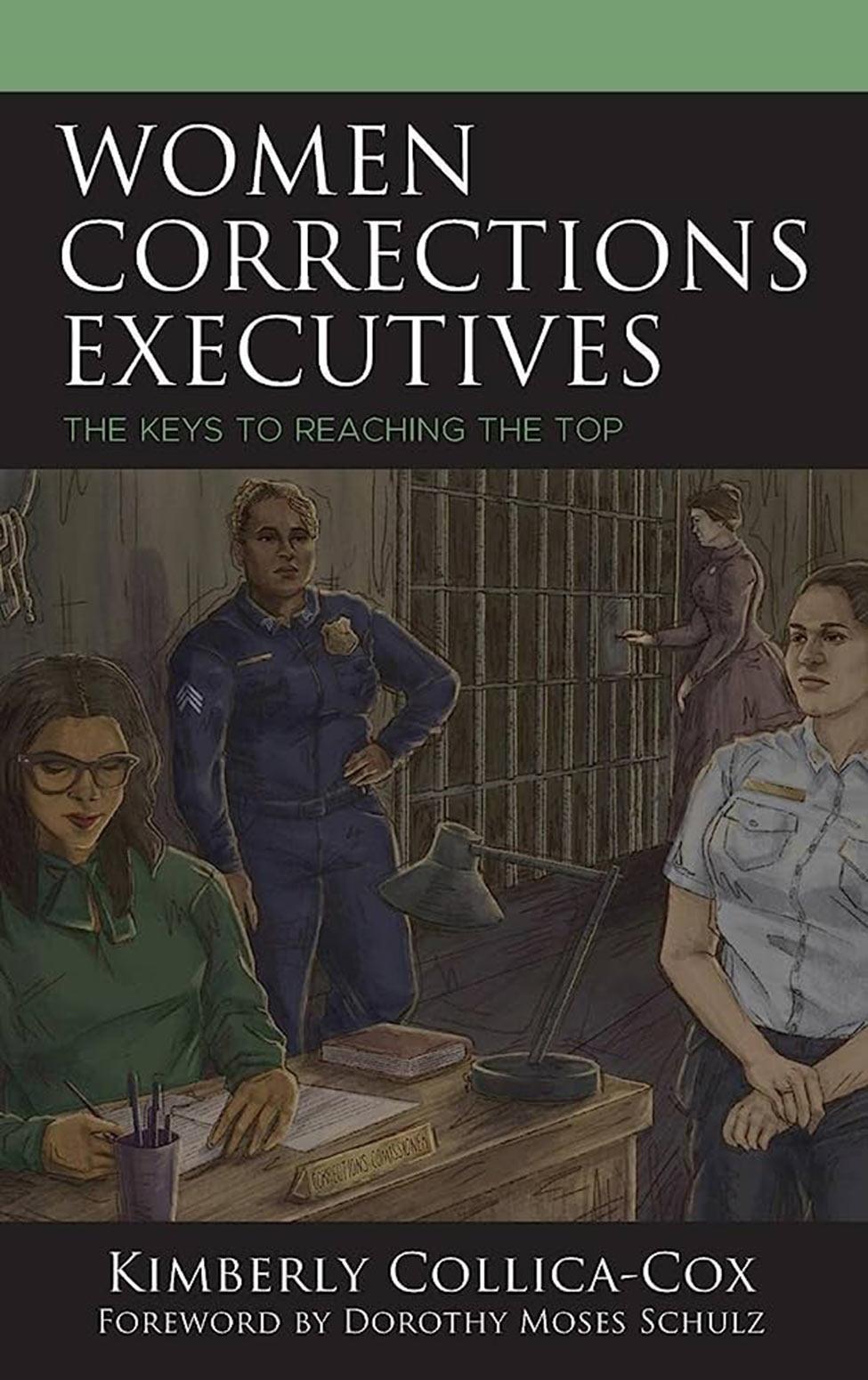

Women Corrections Executives: The Keys to Reaching the Top
Kimberly Collica-Cox, PhD
Professor, Criminal Justice and Security

What is the central theme of your book?
Women Corrections Executives: The Keys to Reaching the Top examines women’s own perceptions of their experiences as corrections executives, their motives for seeking promotion, their career trajectories, and the challenges they face trying to rise through the ranks; challenges include gender bias, perceptions of leadership effectiveness; and the difficulties of maintaining work-life balance.
What inspired you to write this book?
Interestingly, the idea for this project was not conceived by me but was encouraged by my former professor, current friend, and colleague, Dorothy Moses Schulz, PhD, who also served as my research partner on this project. Professor Schulz studied and wrote extensively about women’s roles in policing. With my background, she suggested I pursue a similar line of inquiry pertaining to women's roles in corrections. We have coauthored several articles on this topic, and she encouraged me to write this book.
Why is this book important in your field? What does it contribute to the current body of knowledge on this topic?
There are few studies of women in corrections executive positions. As women advance into executive-level positions, and their numbers grow, information regarding their motivations, successes and challenges necessitate more substantive study. Yet, there are no works based on empirical study that provide a systematic account of women’s career trajectories in corrections. There are several books which examine women’s experiences as corrections officers but not as corrections managers. This work attempts to address this knowledge gap.
Tell me about a particularly special moment in writing this book.
It was when I saw the completed cover for the first time. When I wrote my first book, the publisher chose the cover design. This time, I was able to work with an artist who was able to work beautifully with my ideas. The artist was recommended by my student research/teaching assistant, Alicia Bennett. The artist drew women based on women I work with at the Westchester County Department of Correction. The cover was the last portion of the book to be completed. It finalized the project, and unlike my first book, it felt more representative of me.
What is the one thing you hope readers take away from your book?
I hope they understand that, although corrections receives the least attention in the criminal justice field, its employees, who often face difficult, dangerous, and challenging work, deserve far more respect and consideration than they receive. Behind these walls are dedicated corrections professionals who are often viewed negatively by a society that does not understand what their work entails. While it is difficult to think of a career that is more associated with perceptions of ultra-masculinity, women are successful in making policy and cultural changes to this traditionally male-dominated field. Corrections careers are wide open for women and women have been more successful in advancing in corrections departments, when compared to their policing counterparts. They not only have a rich history in corrections but have established themselves as effective leaders of large sex-integrated institutions. They are true professionals and leaders.
Is there anything else you would like to share about your book?
Despite challenges faced, women corrections executives find highly satisfying careers within corrections, and they would not only make similar choices in terms of their career again, if given the opportunity, but they would highly recommend the field to other women. It was a privilege for me to document their stories. I am very appreciative to The Association of Women Executives in Corrections (AWEC) for trusting me to work with their membership.
What other books have you published?
I have one other academic book published that investigated the roles of incarcerated women as HIV peer educators and examined how such roles provided "purpose' to help alter the life trajectory inside and outside of prison. I have also published a textbook and three civil service exam review books:
Collica, K. (2013). Female Prisoners, AIDS, and Peer Programs: How Female Offenders Transform Their Lives. New York & London: Springer Publishing.
Collica, K. & Furst, G. (2012). Crime and Society. CA: Bridgepoint Education, Inc.
Collica, K. & Saffady, G. (2011). Court Officer Exam. Learning Express: New York
Collica, K. & Furst, G. (2010). State Trooper Exam. Learning Express: New York.
Collica, K., Furst, G., Henriques, Z., Hesalroad. M., & Smith, J. (2008). Corrections Officer Exam, Third Edition. Learning Express: New York.
Fun Facts:
When did you join Dyson?
I joined Pace in 2014. I will be starting my tenth year this Fall.
What motivates you as a teacher?
I am motivated by my passion for corrections work and the need to share that passion with my students, which is why most of my classes are civic engagement courses that are tied to work outside of the classroom in the jail. Students work with incarcerated mothers and fathers in the Parenting, Prison & Pups programs, they help to foster puppies with our incarcerated women and our Young Opportunities Program in Puppies on the Block, and they earn college credits taking classes alongside incarcerated students in our Inside-Out Program. I am all about experiential learning and students gaining real world experience. Working with corrections populations cultivated my passion for wanting to help students understand and care about the world they will enter as criminal justice professionals. It is my hope that my enthusiasm encourages them to be agents of change.
What do you do in your spare time; to relax/unwind?
The concept of having spare time is the ultimate urban legend! There is so little, but when I do have free time, I like to spend that with my husband, children, grandchildren, and dog. In the summer, I enjoy spending time by the ocean. The Jersey Shore - specifically Wildwood - is one of my most favorite places.
What are you reading right now?
Usually, student papers! But, since I also decided to go back to school to take some graduate classes in mental health counseling, I am reading a book on culturally alert counseling to prepare me for my summer course.